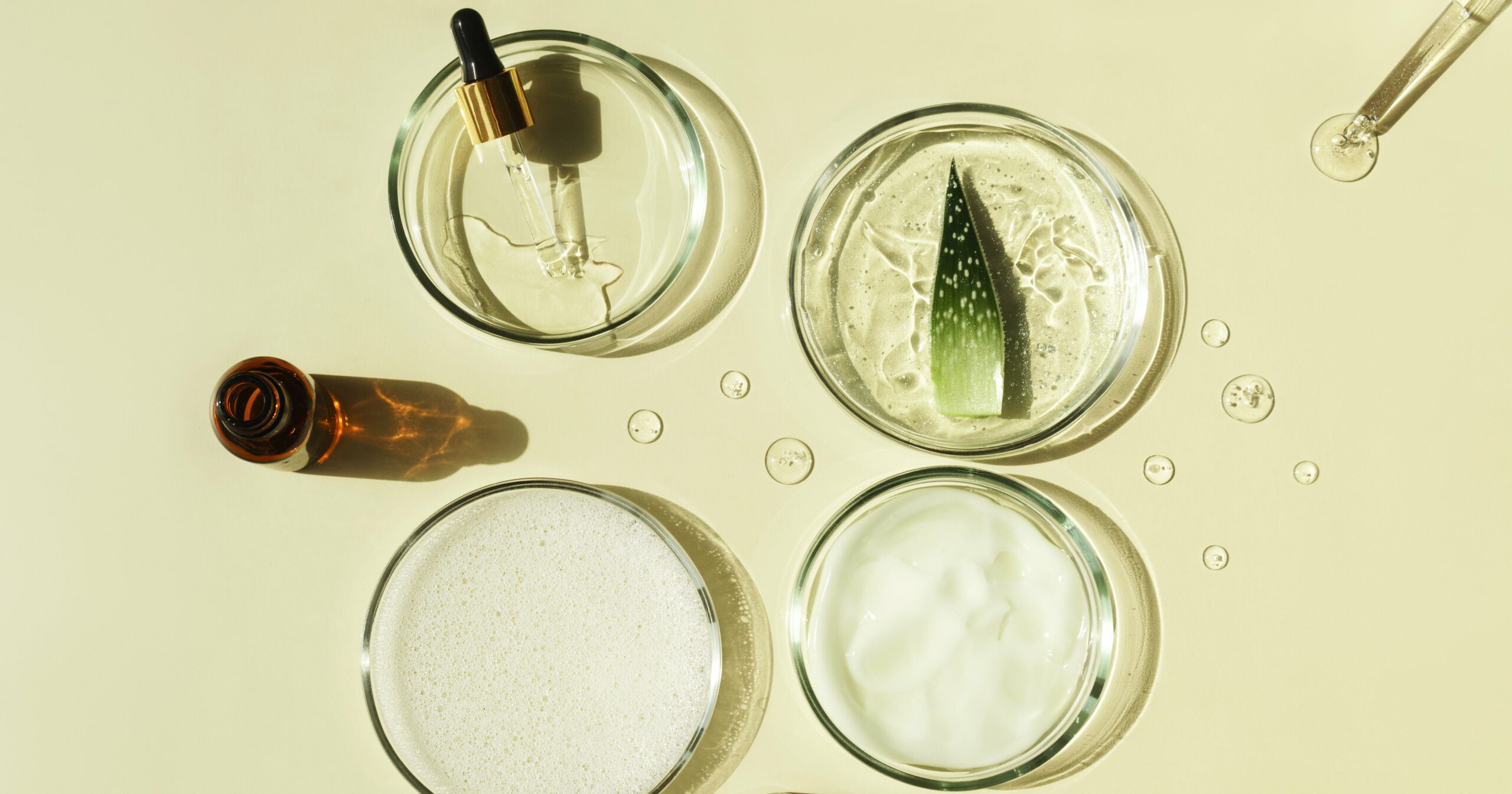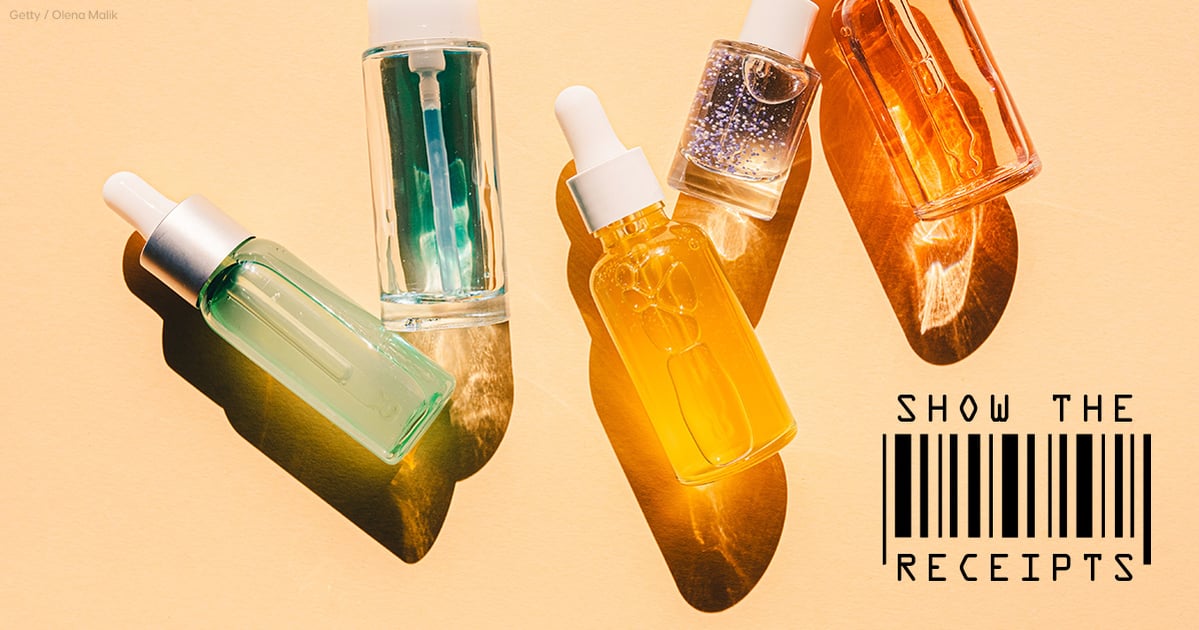Being a thoughtful beauty consumer is harder than it should be. Even if you’re committed to buying products that brag about being “clean,” “sustainable,” and “cruelty-free,” there’s no oversight around any of these terms. In fact, oftentimes when you see them on labels, they don’t mean anything at all. This lack of regulation places the responsibility on you, the shopper, to ensure that what you’re buying aligns with your values – making it critically important to educate yourself about beauty marketing and turn your bullshit radar way up in the process.
All of this leads us to “ethical sourcing,” another one of those buzzy beauty terms that should clue us into a product’s merits but . . . doesn’t necessarily do that. “The term and what it means sits in a gray zone – ethical or sustainable sourcing, practices, and ingredients aren’t always as clean-cut as some may imagine,” says Charlene Valledor, the president of brand incubation and marketing company SOS Beauty, who has a background in cosmetic chemistry, formulation, and product development.
Yes, we get that it’s frustrating. But keep reading to find out everything experts really want you to know about being an ethical beauty shopper.
What Is Ethical Sourcing?
“The term ‘ethical sourcing’ specifically refers to the process of ensuring that ethical social practices are followed throughout the supply chain,” Valledor tells PS. “This includes upholding rights, decent working conditions, health and safety, good business ethics, and morale.”
In other words, ethical sourcing means that a brand isn’t harming an environment – or its people – for the sake of its manufacturing processes. “It means that an ingredient is being sourced in a way that more positively impacts the society, economy, or even the environment of the region that it’s coming from,” says Joyce de Lemos, a clinical cosmetic chemist and the cofounder of skin-care brand Dieux.
In the beauty world, you’ll often see the terms “sustainable sourcing” or “responsible sourcing” being used interchangeably with “ethical sourcing” (further proof that these phrases don’t have one standard definition). Valledor says all of these terms refer to “ingredients being gathered or produced in a way that minimizes harm to the environment,” which typically includes practices like sustainable farming, responsible harvesting, and anything else that preserves an environment’s biodiversity.
Because it’s up to brands to come up with their own definitions of “ethical sourcing,” seeing the term on a label doesn’t necessarily mean that they’re addressing each of these factors. That’s why it’s so important to look for those who are transparent about their practices and upfront about the traceability of their ingredients. When a product is truly ethically sourced, chances are they’ll make this information readily available.
Broadly speaking, ethical sourcing encompasses the following pillars:
- Fair trade and labor rights: Fair trade ensures that the producers who are sourcing materials (which often come from developing nations) are compensated fairly in order to promote better trading conditions. Additionally, fair wages, banning child and forced labor, safe working conditions, and gender equality are all addressed by ethical sourcing.
- Environmental sustainability: On the eco-friendly front, “ethically sourced” materials are collected in a way that preserves an environment’s biodiversity. There is also consideration about how much water and energy are being used to produce a product, as well as how much carbon is emitted throughout the manufacturing process.
- Animal welfare: The humane treatment of animals is another factor of ethical sourcing. That said, it’s worth noting that the terms “ethically sourced,” “vegan,” and “cruelty-free” are not mutually exclusive, nor are they monitored by any governing body.
- Community impact: Ethically sourced brands will ideally leave the communities they’re working with better than they found them. This means avoiding the displacement of Indigenous peoples, aiding in economic development, and, in some cases, giving back via philanthropic initiatives.
Why Ethical Sourcing Matters at Every Step of the Supply Chain
A lot goes into making a beauty product. Sure, there are the raw ingredients, but there are also the people who harvest them, the manufacturers that formulate them, and the packaging plants that transport them into grid-worthy bottles and onto the shelves at Sephora and Ulta. Each step in the supply chain has an impact, and ethical sourcing is all about minimizing their potential negative effects.
First, let’s talk about the ingredients themselves. While plant-based formulas can be great, just because something is “natural” doesn’t necessarily mean it’s “ethical.” Popular ingredients like vanilla, argan oil, and apricot have all faced declining supplies in recent years due to over-farming; there are concerns around the endangered plant that bakuchiol is derived from going extinct; and palm oil is well-known to be a major driver of deforestation in developing nations. Additionally, animal-derived ingredients like keratin, elastin, and growth factors create problems of their own, says Leah Garcia, the founder and CEO of beauty brand Nulastin. Bovine collagen, for example, has recently been linked to illegal land seizure, the displacement of Indigenous communities, and climate change (because Brazilian forests have been cut down to make room for cattle).
“Plant-based materials can also require large amounts of energy for collection and processing, which can negatively impact local communities,” says de Lemos, who adds that synthetics aren’t much better. “Some synthetic materials require complicated manufacturing techniques that require a lot of energy and, again, affect local communities.”
Then there are the people who are tasked with harvesting these ingredients. “The cosmetics industry carries high risks of modern slavery and child labor,” human rights specialist Cindy Berman told Reuters in 2018 after several children died harvesting mica (the ingredient that gives makeup its shimmer) in India. “Many raw materials are sourced from very poor and conflict affected countries, where labor laws are not enforced, and access to decent jobs, schools and public services are extremely limited for the majority of people struggling to survive.”
Beyond forced work and child labor, there are also concerns about gender equality, fair wages, and safe working conditions, as well as the economic impact that large-scale manufacturing can have on rural communities.
“In theory, you can have a material or a package that has low waste and low carbon emissions, so from an environmental standpoint it’s very sustainable, but it can be socially unsustainable in the sense that it’s impacting a local community’s food supply or employing child labor,” says Allison Turquoise, a beauty packaging and sustainability educator who works with Babo Botanicals. “When we think about sustainability in the beauty industry right now, there’s a very, very heavy emphasis on environmental sustainability, but we tend to neglect the conversation of social and economic sustainability. We really need to ensure we’re addressing all three of those pillars to achieve true sustainability.”
Finally, there are manufacturing plants, which require significant amounts of water and energy to produce broad-scale product lines and tend to leave a pretty hefty carbon footprint. “Unfortunately, it is so difficult to get transparent oversight into the everyday operations of some of the factories or raw-material suppliers when they are overseas,” Turquoise says. She notes that even if we know for sure that an ingredient has been sustainably sourced, we can’t always be so sure about the packaging. Bio-resin, for example, has been touted as a “sustainable” alternative to plastic, but Turquoise cautions that sourcing the plant-based materials required to create it often interferes with the food sources of local communities.
There’s a lot to consider here, which explains why it’s so dang hard to get a standard definition of “ethical sourcing” in the first place. But if you’re feeling overwhelmed, not to worry – there are a few things you can do to ensure you’re shopping smart.
How to Shop Products That Are Really “Ethically Sourced”
Because the term doesn’t have a standard definition, you must dive a little bit deeper and determine what a brand actually means when it says its products are ethically sourced.
“For one company, it may mean that the community that the ingredient is being harvested near directly benefits from the ingredient business. For another company, it may mean that they use a reduced amount of energy to manufacture their ingredients,” de Lemos says. “The definition is broad in the industry, and that may be the case for consumers too, so they should ask questions and figure out if a brand’s claims align with their own definition of being ‘ethically sourced.'”
While there is currently no unifying legislation for ethical sourcing in the US, the California Transparency in Supply Chains Act, which passed in 2010, “requires retailers and manufacturers to annually report on how they address modern slavery risks in their supply chains,” Valledor says. This means that any retailer or manufacturer that does business in California and is bringing in more than $100 million globally is likely safe to shop – at least from a human rights perspective. Additionally, retailers like Credo and Whole Foods have their own (legitimate) ethical sourcing guidelines, so scrolling through their beauty offerings can help you determine which brands are doing it right.
Though seeing “ethically sourced” on a label isn’t enough to confirm that a product is actually ethically sourced, there are a few other terms you can look for to steer you in the right direction:
- Fairtrade Certified: The Fairtrade organization works across 70 countries to ensure that “the farmers and workers that grew your product are getting a fair deal on their goods, the farms are prioritizing workers’ rights and following set environmental standards,” according to the organization’s website. Companies must apply for certification and are regularly audited by an accredited third party.
- Rainforest Alliance Certified: If you see the signature frog insignia of the Rainforest Alliance on your product, it means that it was developed using practices that protect standing forests, reduce greenhouse gases, advance the rights of Indigenous peoples, and enhance the economic well-being of rural communities.
- Certified B Corp: According to the organization’s website, a B Corp certification confirms that “a business is meeting high standards of verified performance, accountability, and transparency on factors from employee benefits and charitable giving to supply chain practices and input materials.” This means receiving a score of 80 or above on the B Impact Assessment to confirm the highest levels of social and environmental performance and transparently allowing their practices and score to be publicly available on the B Corp website.
Beyond that, though, “it’s up to the brands to do their due diligence and create their own ethical sourcing policy to put into practice,” Valledor says. Your best bet, then, is to look for brands that are transparent about their supply chains and the way they source their ingredients. The guiding principle to follow? If it’s not totally clear what’s going on behind the scenes, opt to invest your money elsewhere.
Zoë Weiner is a freelance beauty and wellness writer. Her work has appeared in Bustle, Byrdie, Cosmopolitan, POPSUGAR, GQ, Glamour, Marie Claire, Allure, Self, Brides, and Teen Vogue, among others, and she was the senior beauty editor at Well+Good.



